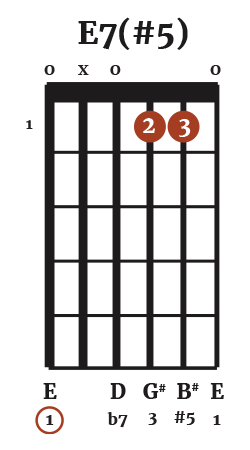Minor scales are known for their emotional depth and versatility. They can convey a wide range of feelings, from introspection and sadness to mystery and tension. This emotional richness makes minor scales useful for expressing complex moods in music.
Minor scales are defined by having a minor third & perfect fifth interval, as they are built on the 6th scale degree of the major scale.
The natural minor, harmonic minor, and melodic minor scales are all variations of the minor scale, each with its own unique characteristics.
In the following article, we’ll quickly cover the key differences and provide some practical examples.
The Natural Minor Scale

The natural minor scale is the most common form of the minor scale.
It follows a pattern of whole and half steps (intervals) to create a unique sequence of notes:
whole, half, whole, whole, half, whole, whole.
In the key of A minor, for example, the natural minor scale would include the notes:
| W | H | W | W | H | W | W |
| A | B | C | D | E | F | G |
Interestingly, the natural minor scale has a consistent interval structure, maintaining the same notes whether ascending or descending.
The Harmonic Minor Scale

The harmonic minor scale is a variation of the natural minor scale, with one crucial difference: it raises the seventh note of the natural minor scale by a half step (semitone).
This small adjustment creates a unique and distinctive interval pattern: whole, half, whole, whole, half, augmented second (whole + half step), half.
Using the key of A minor again as an example, the harmonic minor scale would include the notes:
| W | H | W | W | H | W + H | W |
| A | B | C | D | E | F | G# |

Notice the raised seventh note?
The harmonic minor scale is used to create tension and is particularly useful for building specific chords, including the dominant seventh chord with a raised fifth (e.g., E7♯5 in A minor).
The harmonic minor scale’s distinctive interval pattern gives it a unique and exotic sound. This scale is often used to evoke a Middle Eastern or Eastern European sound. It can transport listeners to different cultures and landscapes through its use in music. Santana’s “Smooth” is an example of a song written using harmonic minor.
The Melodic Minor Scale
The melodic minor scale is another variation of the natural minor scale but is unique among common scales in western music for having different ascending and descending forms.
This duality in the scale helps resolve some of the harmonic and melodic challenges posed by the natural minor scale.
When ascending, the melodic minor scale raises both the sixth and seventh notes of the natural minor scale by a half step.
A melodic minor (ascending)

In the key of A minor, the ascending melodic minor scale would include the following notes:
| W | H | W | W | W | W | H |
| A | B | C | D | E | F# | G# |
When descending, it reverts to the natural minor scale by using the same notes as in the natural minor.
A melodic minor (descending)

When using descending form the notes are:
| W | W | H | W | W | H | W |
| A | G | F | E | D | C | B |
The melodic minor scale is used to create more expressive melodic lines in certain musical contexts.
Final Thoughts
In summary, the natural minor scale is the most basic form of the minor scale, while the harmonic minor and melodic minor scales introduce alterations to specific notes to achieve different musical effects. These variations are essential tools for composers and musicians to create a wide range of melodies, harmonies, and emotional expressions in music.



